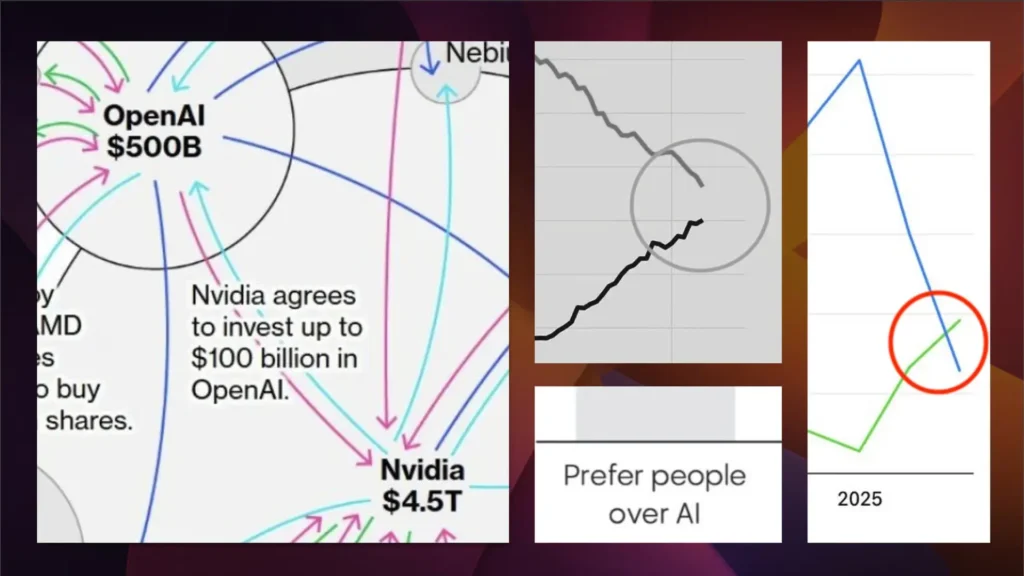1. Tech giants are fueling an AI bubble
Analysts have raised concerns that “circular” financial structures among a handful of tech giants is fueling a bubble.
The latest example: NVIDIA’s $100 billion investment in OpenAI. OpenAI will use that money to buy NVIDIA’s chips and data centers.
Bloomberg aptly captured these circular dynamics in a balloon chart:
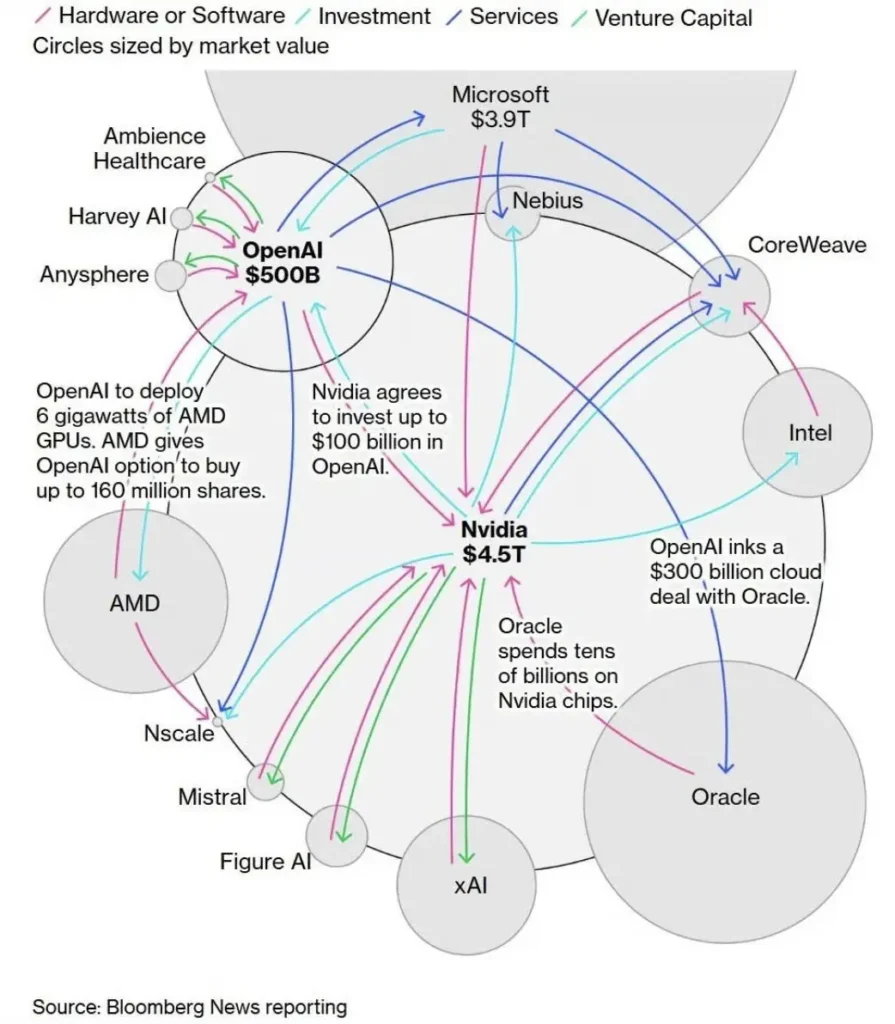
2. AI buildout spend exceeds all consumer spend
The enormity of the AI buildout is such that, in the US, spending on the AI buildout is now adding more to GDP growth than consumer spending.
Analysts suggest that, if not for the AI bubble, the US would be in a recession.
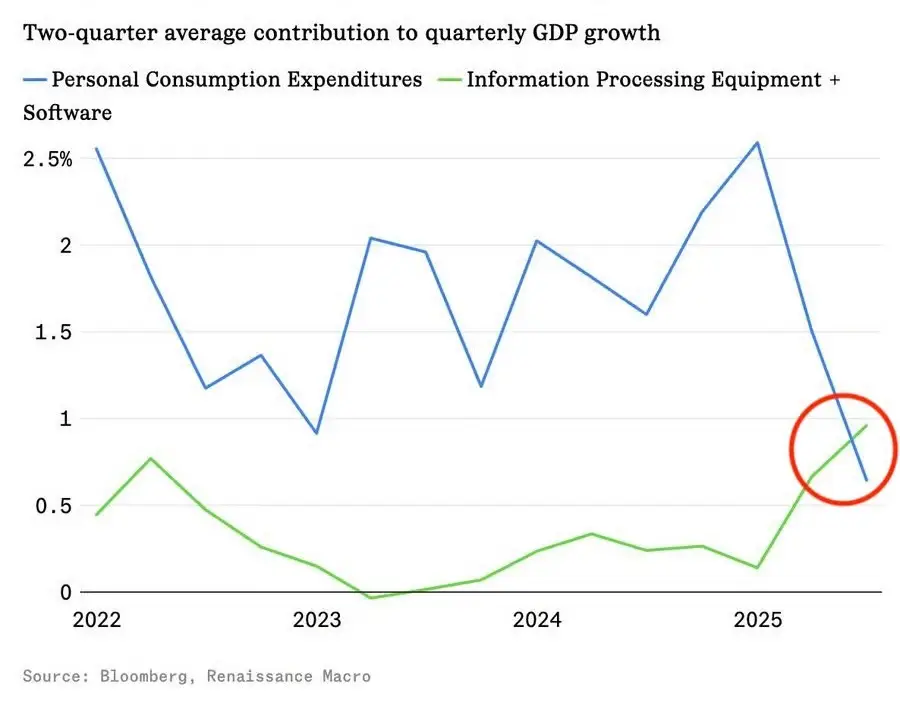
3. Investment is shifting from where humans work (offices) to where AI works (data centers).
What does this data center build out mean for you and I?
The accelerated spending on data center construction comes as less and less money is being spent on the places where you and I work: offices.
If wider the economy is shifting spend from offices to data centers, it begs the question:
Who works out of a data center?
Artificial Intelligence, of course.
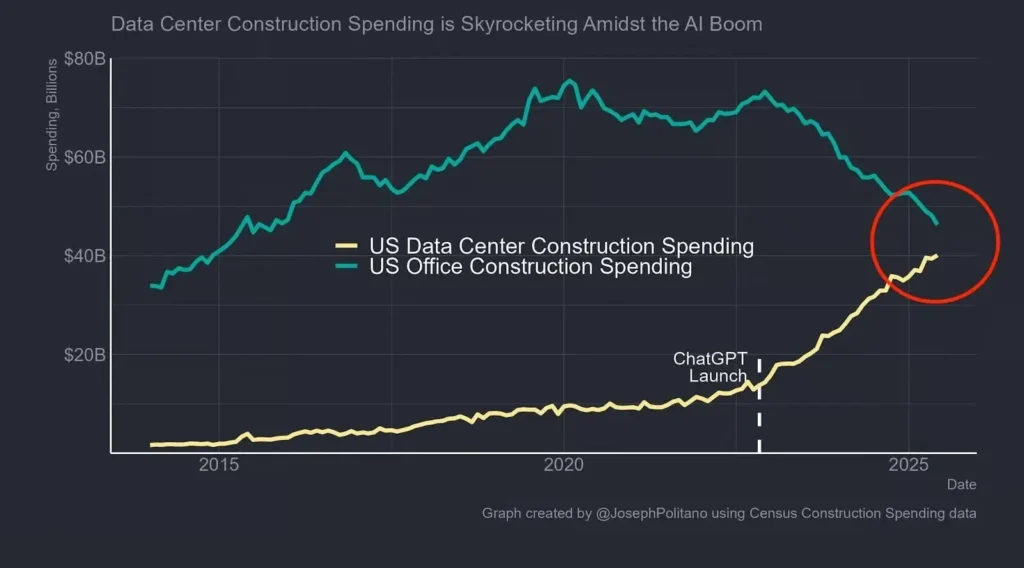
The value of data centers under construction is set to surpass office buildings. (Source: @JosephPolitano)
4. “AI coworkers” will take on all forms of knowledge work
What types of jobs will these “AI coworkers” working out of data centers occupy?
Microsoft studied ~200,000 Copilot conversations from 2024 to understand how the tool is being used in real-work contexts and what this implies about which occupations are most affected by AI.
The study found roles in knowledge-work register the highest AI applicability scores, while mechanical labor is the least impacted.
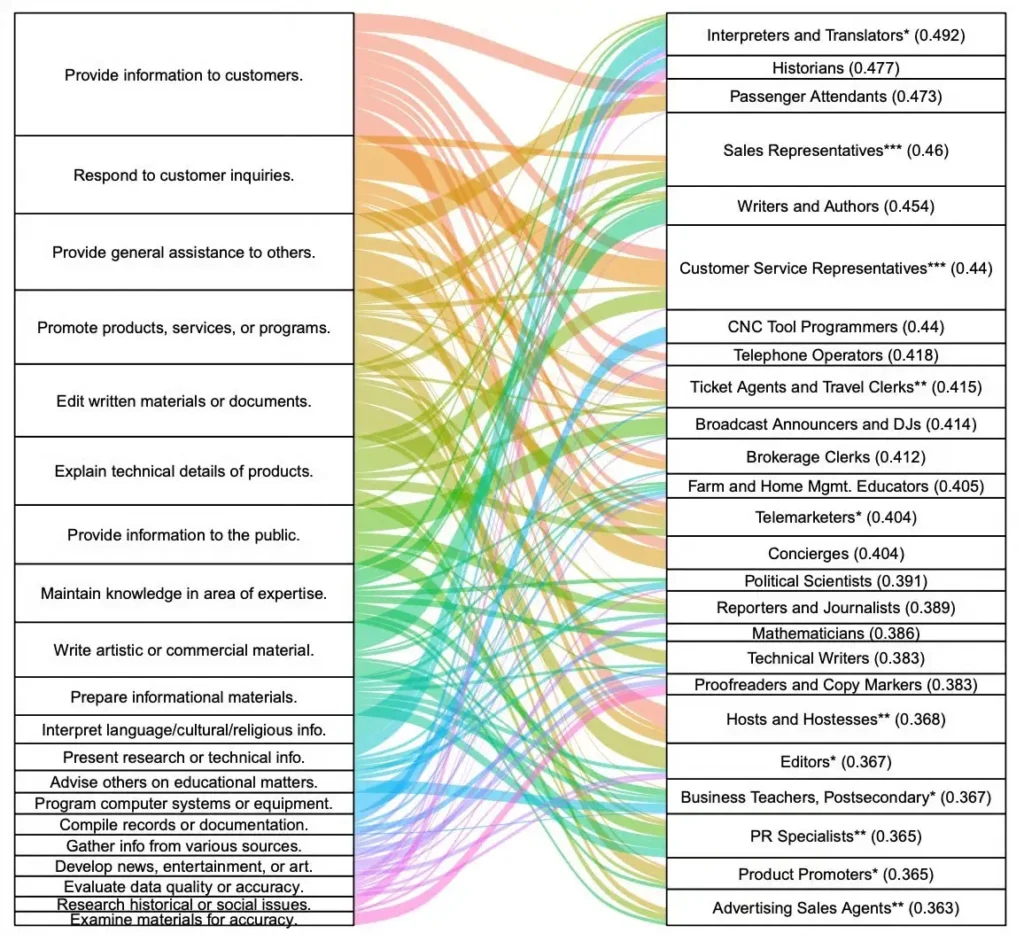
5. The AI build-out mirrors the dot-com era build-out
Do you remember all those streets dug out during the dot-com era?
The AI data center buildout mirrors the build-out of optical fiber to offices and homes during the dot-com era.
It was built on the promise of the high bandwidth fiber opening up new applications – such as video calls, online commerce and movies-on-demand.
The build-out led to the now infamous, “dot com bust”.
Yet, as we look back now, we see the build out that was accelerated during the dot-com era, and has continued since, was not wrong – only the time horizon for realizing the promise.
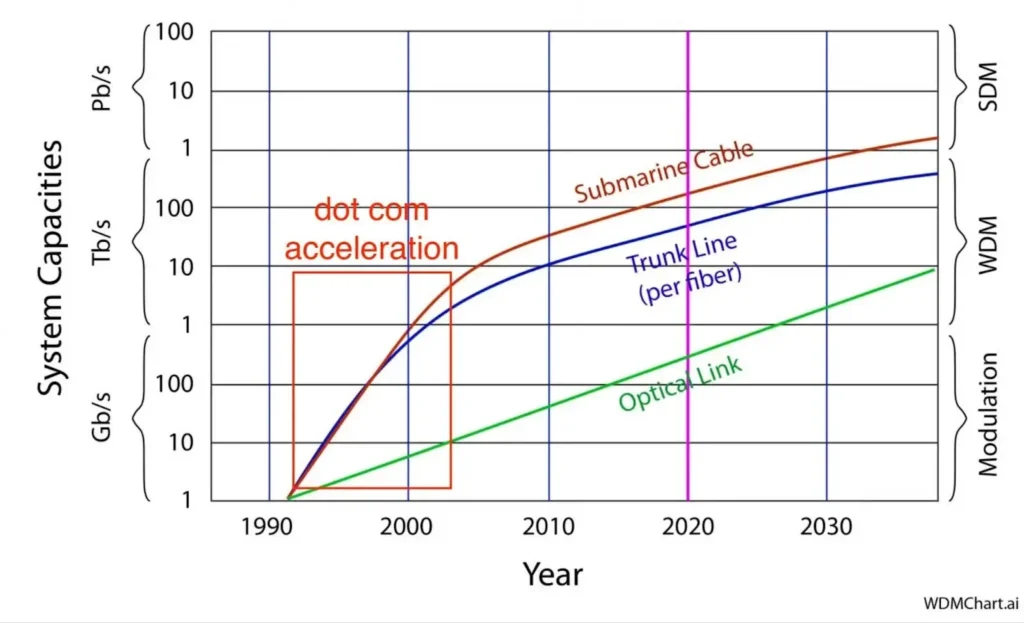
Does the same hold true for AI? Will the promise of AI – in producing “AI coworkers” – become reality?
For now, there are two challenges.
6. AI use in large firms is down in recent months
Companies are expected to be one of the largest customers of the data center capacity that is built out, yet AI adoption in organizations is still a struggle.
A recent US Census Bureau survey of 1.2 million firms asked businesses whether they had used AI tools in the previous two weeks. The data suggests AI adoption has been declining among companies with more than 250 employees.
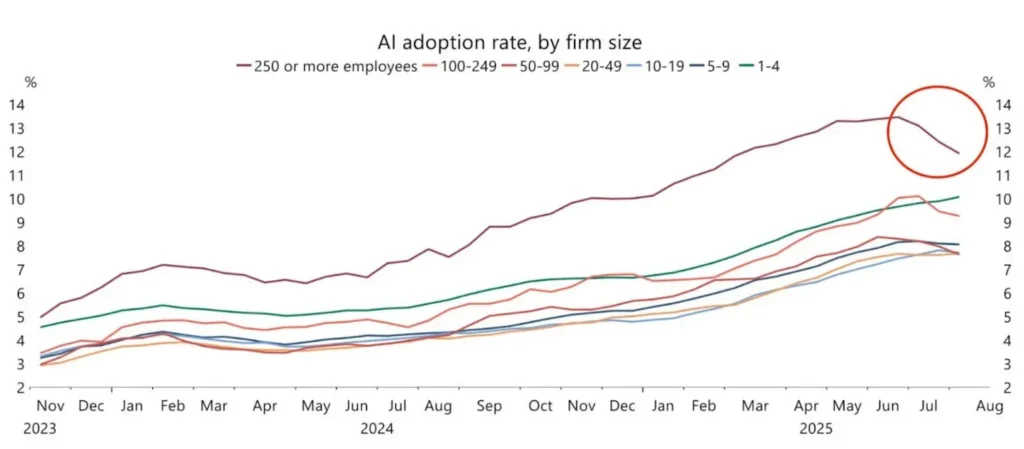
7. People prefer people, over AI
In the meanwhile, a survey of 5,031 representative U.S. adults revealed one barrier to AI adoption over all else: 80% say they prefer interacting with people over AI.
Related to this, 53% say they need to feel accountable to another human, rather than an AI.
If your boss, teacher or coach was an AI, would you take them as seriously?
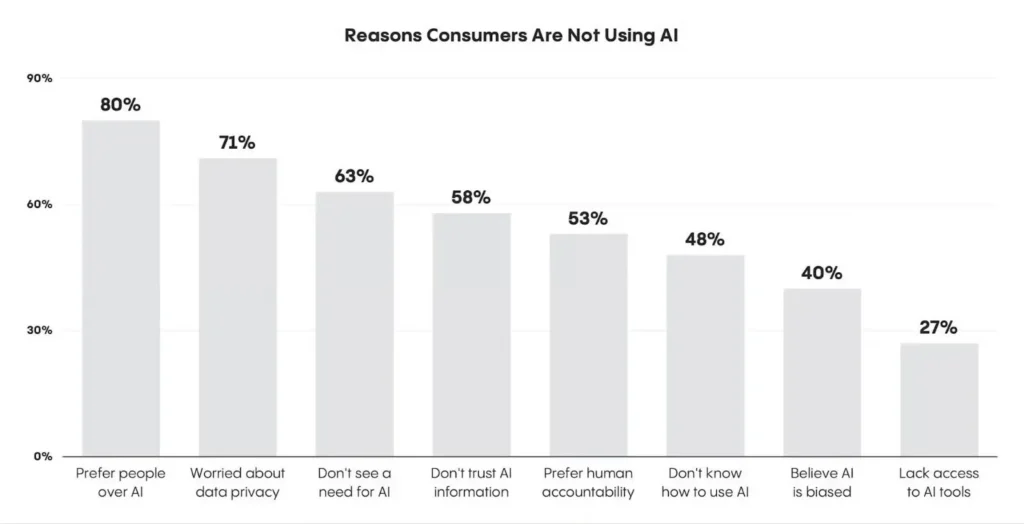
What this means for you.
The AI bubble is a massive bet on AI coworkers – termed “agents” by some.
As Western countries increasingly restrict immigration and face flat-to-declining birth rates, tech leaders point to AI as the future for continued economic growth – taking on work we would otherwise not be able to hire people for.
Directionally, this seems likely, as does a “messy middle” for how we get there.
Check out my previous newsletter on the impact of the data center buildout on the environment (LinkedIn). It’s not what you’d think.
Or my “fun” experience delegating coding work to an AI coworker (8 min video).
